September 2016
September 2, 2016
Photographing a mule at the instant its head is blown off by dynamite
Advances in photographic technology that occurred in the 1860s and 70s led to the invention of plates that had exposure times of a fraction of a second. This allowed for "instantaneous photography," as it was called at the time. Moving objects could be frozen in time by the camera.Researchers immediately used this technology to study bodies in motion. Most famously, Eadweard Muybridge in 1878 took a series of images to study the galloping of a horse. Similarly, neurologist Jean-Martin Charcot used instantaneous photography to study the muscular movements of his human patients.
A more unusual application of the technology took place on June 6, 1881, when Mr. Van Sothen, photographer in charge at the United States School of Submarine Engineers in Willett's Point, New York, took an instantaneous photograph of a mule having its head blown off by dynamite. The mule was apparently old and was going to be put down anyway, so it was decided to "sacrifice the animal upon the altar of science."
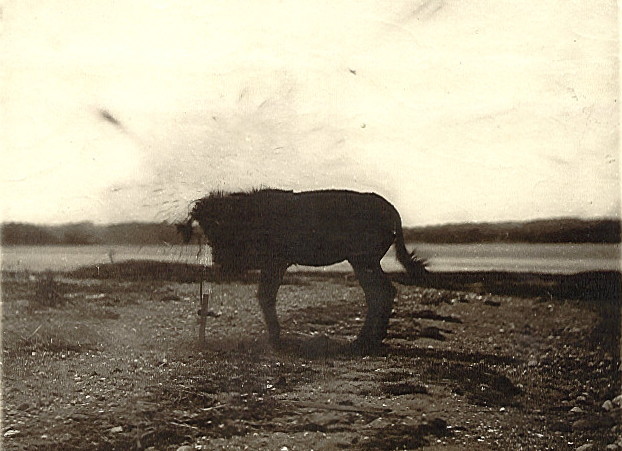
The resulting photo
Eugene Griffin, First Lieutenant of Engineers, described the details of the experiment in a letter to Lieut. Col. H.L. Abbot:
Several months later Scientific American published an account of the experiment, including several engravings showing before and after scenes:
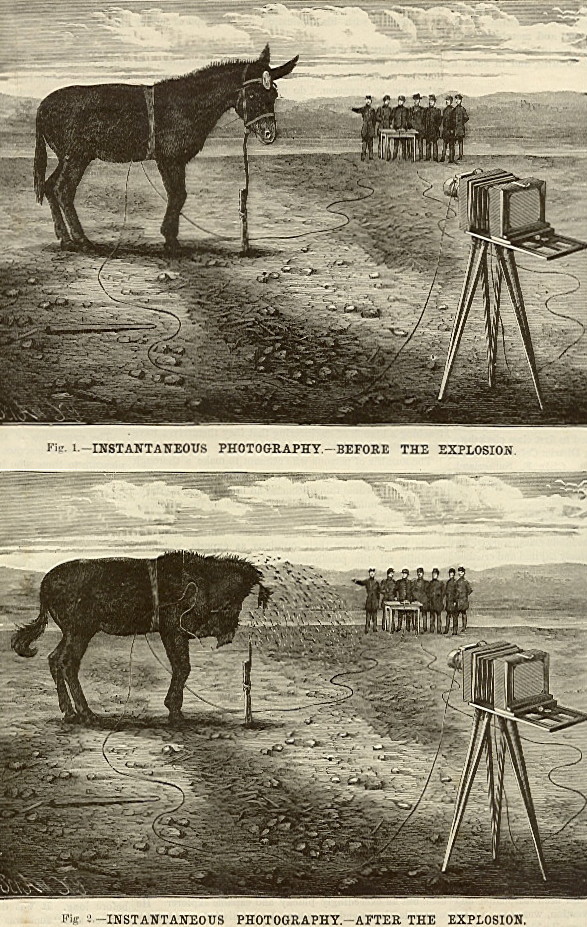
Scientific American - Sep 24, 1881
Posted By: Alex - Fri Sep 02, 2016 -
Comments (0)
Category: Mad Scientists, Evil Geniuses, Insane Villains, Photography and Photographers, Science, Experiments, Nineteenth Century
Bouncing Billy Barker, Canal Jumper
Back in November 2008 I posted a video of Tony McCabe, a man who claimed he could jump on hen's eggs and human noses without breaking them, and who demonstrated his ability in 1974 on the UK's Nationwide TV program.At the time, I thought McCabe was just some random, weird guy. But I recently learned that there's actually some broader historical context to his odd performance.
He was apparently one of the last of a type of British showman who would entertain crowds by performing jumping feats. They would jump into a crate of eggs and out again, without breaking any. Or jump on and off a man's nose without hurting him. Or jump on and off a candle, putting it out without breaking it. Or jump the length of a snooker table backwards from a standing start.
But the greatest feat these showmen aspired to perform was to jump across a canal, appearing to bounce off the water in the middle.
One of the most famous of these jumpers was Bouncing Billy Barker of Gorton in Manchester. He supposedly bounced across the Openshaw Canal, and then, as an encore, bounced back from the opposite site — backwards.
Tony McCabe was the protégé of Bouncing Billy Barker. But I'm guessing, based on the quality of McCabe's performance in the video, that he must not have attained the full level of skill of his master.
Read more about Bouncing Billy Barker at The Mudcat Cafe, ladagirl.com, and the Real Deal blog.
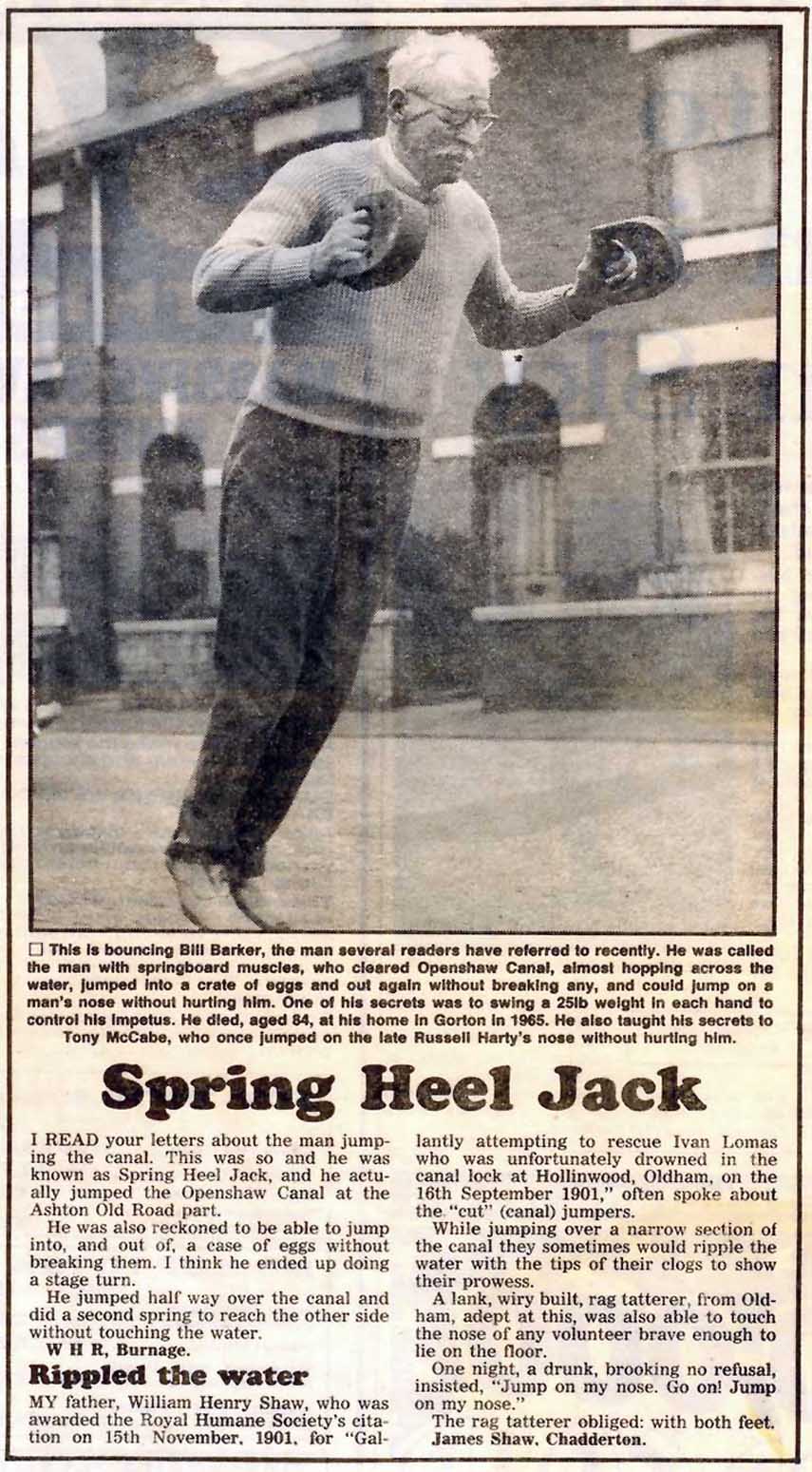
Manchester Evening News - circa 1992 (via ladagirl.com)
Posted By: Alex - Fri Sep 02, 2016 -
Comments (2)
Category: Daredevils, Stuntpeople and Thrillseekers, Human Marvels
Two Weird Belt Buckles
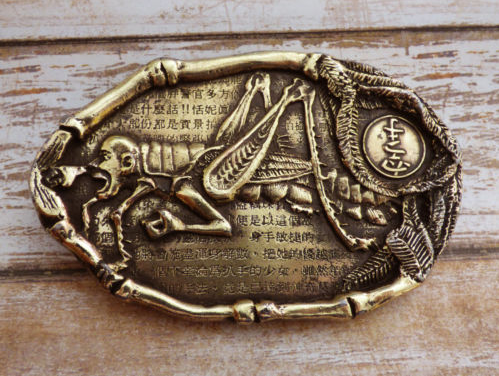
Ebay auction here.
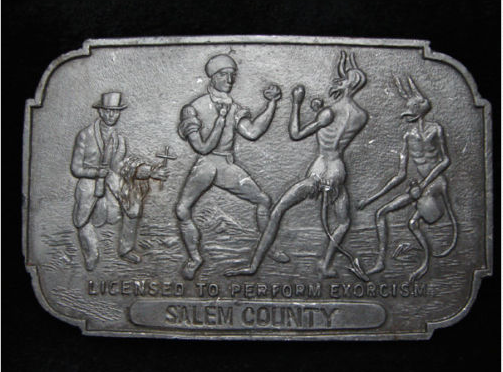
Ebay auction here.
Posted By: Paul - Fri Sep 02, 2016 -
Comments (3)
Category: Anthropomorphism, Fashion, Horror, Insects and Spiders, Kitsch and Collectibles, Religion
September 1, 2016
Name That List, #33
What is this a list of? The answer is below in extended.- A lobster
- A jock strap
- Gallstones
- Girl Scout cookies
- Brooks Robinson's third base
- Cannon Mills' one-millionth towel
- Birth control devices
- A 14-year-old cupcake
- Gen. Westmoreland's hat
- Barbecued ribs
- A wadded-up paper bag
- A lot of Big Macs
More in extended >>
Posted By: Alex - Thu Sep 01, 2016 -
Comments (5)
Category: Name That List
Miss Stardust of 1948
A couple of points about this beauty queen.1) Mother was also a beauty queen, "Miss Brooklyn of 1928." Alas, I can find no pix of the elder Bayes.
2) Should a beauty queen who represents the "falsie" industry be considered for her natural endowments, or her falsie-assisted curves?
3) Note the loving care and extra attention that WU brings to all its posts, as we present the previous year's winner below, as a supplement.

Original pic here.
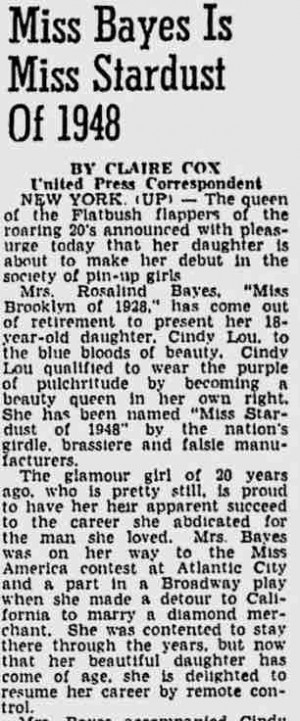
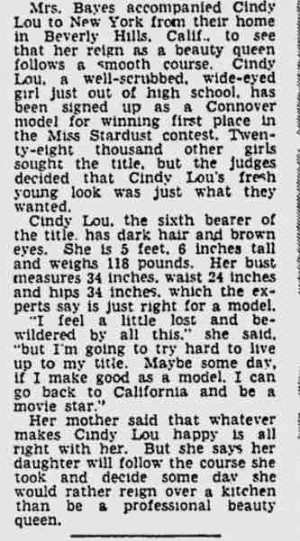
Original article here.
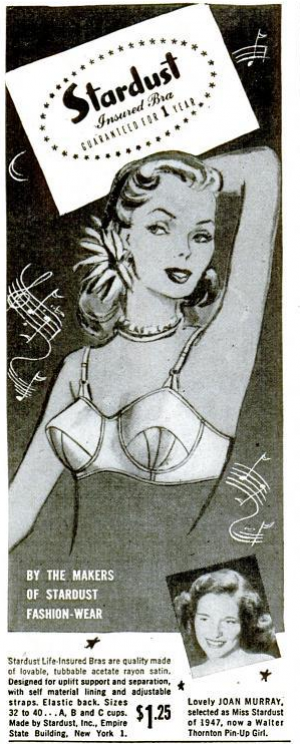
Original ad here.
Posted By: Paul - Thu Sep 01, 2016 -
Comments (3)
Category: Beauty, Ugliness and Other Aesthetic Issues, Body Modifications, Children, Parents, 1920s, 1940s
| Get WU Posts by Email | |
|---|---|

| Who We Are |
|---|
| Alex Boese Alex is the creator and curator of the Museum of Hoaxes. He's also the author of various weird, non-fiction books such as Elephants on Acid. Paul Di Filippo Paul has been paid to put weird ideas into fictional form for over thirty years, in his career as a noted science fiction writer. He has recently begun blogging on many curious topics with three fellow writers at The Inferior 4+1. Chuck Shepherd Chuck is the purveyor of News of the Weird, the syndicated column which for decades has set the gold-standard for reporting on oddities and the bizarre. Our banner was drawn by the legendary underground cartoonist Rick Altergott. Contact Us |

